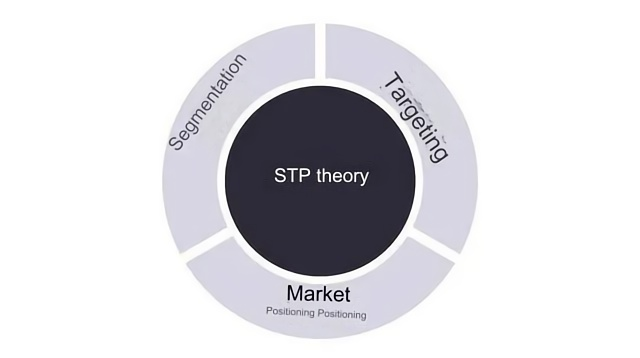Have you noticed this alarming trend? In the first half of this year, many companies have seen their profit numbers plummet like a freefall, which is simply devastating!
These are all major brands, leaders in their respective industries, yet their numbers have become so dismal. What exactly is going on?
Is it just because the traffic dividend has ended and competition is fierce?
I think it's more than that—the real reason is that the demands of today's consumer market are undergoing profound changes.
Since July, I’ve noticed something significant. The most common requests from clients are no longer solely focused on private domain growth and membership expansion.
Instead, they’re looking for business diagnostics and reviews. Some focus on existing businesses, while others are targeting new business lines. This indicates that companies realize growth isn't just about buying traffic and adjusting prices. It’s about making changes to the business itself.
From an external perspective, business starts with demand. From an internal perspective, it involves models, products, marketing, and organization.
Just this week, a client dragged me to a secluded inn, and we spent three full days in a “retreat” with their business team.
Their business had seen a 45% decline in Q2. Multiple internal discussions had been held, but consensus remained elusive. Disagreements between the boss and the business team became apparent, and the direction grew increasingly unclear. So, they sought a consultant to participate in a business diagnosis and review, providing professional guidance and a fresh perspective from the outside.
At this point, facing a problem is not scary. As the saying goes, "Sharpening the axe does not delay the job of chopping wood." Taking a pause to clear your mind is essential.
The key to a business review is: one hand looks at the market, the other looks at competitors. Identify your position, then look for gaps.
Before our meeting, I assigned two crucial tasks.
Task 1: A Deep Dive into the Company's Own Operations
I provided them with a table covering nine dimensions: target customers, market positioning, products, channels, pricing, promotion (marketing), team, services, and technology. I asked them to fill in the company’s information according to these nine dimensions. These dimensions are derived from the core elements of the STP strategy and the 4P theory in marketing. After filling it out, they were required to send it to the boss and all attendees in advance, ensuring everyone was familiar with it.

Task 2: Comprehensive Analysis of 5-7 Competitors
I asked them to follow the same nine dimensions as in the first task. Given that their industry is suitable for building IP, I added an additional dimension of "Founder IP," asking them to also review the founder's expertise and background.
Compared to the first task, this one had an extra critical task: the business leader had to clearly outline where each competitor outperformed them in each dimension and explain in detail what made them stronger. This "strength" could be either factual or subjective. For example, a competitor might have better product packaging (aesthetic appeal).
The Crucial Moment: The Business Review Meeting
I specifically asked the boss to chair the meeting but made three agreements with him: during the facilitation, he should refrain from expressing personal opinions, allow the business team to speak freely, and only voice his thoughts when it was his turn. Additionally, he needed to set aside his authority and refrain from criticizing or blaming others.
I, on the other hand, would assist and guide throughout the process, identifying issues and digging deeper.
During the business review, a critical process detail is "consensus confirmation."
While the result (action plan) is crucial, the review process itself is a collective wisdom exercise, where problems are dissected and examined. At each stage, the issues must be clearly articulated, discussed, and confirmed, ensuring that the entire process remains transparent.
In the company’s self-assessment phase, I confirmed consensus between the boss and the team, ensuring that the conveyed message was accurate and that everyone’s understanding of the information was aligned.
During the competitor analysis, the same consensus was required for every competitor’s strength, ensuring everyone had a uniform and highly recognized understanding.
If there were disagreements, we would discuss on the spot, striving for consensus. If consensus couldn’t be reached, we would record both sides as two different perspectives.
From past consulting projects, I’ve found that when a company, its competitors, and the market are clearly understood, finding the solution becomes much easier.
Once the two tasks were completed, we moved on to the next step: discussing how to respond to competitors' strengths. During this process, we needed analysis and decision-making, which required data and information. Our principle was: if we lacked any data, we would collect it on the spot.
In short, “solve problems on the spot,” develop solutions (ideas) right there, and even draft action plans. This approach is highly efficient, and with both the boss and the business team working together on-site, morale was exceptionally high.
Our anxiety and confusion often stem from not knowing what to do. Once we know the path forward, even if it’s just a direction to try, anxiety and confusion will ease.
In the end, the business review ended successfully. We identified the causes of the business decline, knew where to make adjustments, clarified how we differed from competitors, and even predicted future industry trends. Everyone was also clear about what they needed to do moving forward.
No more hesitation or confusion—the only thing left is to take action!
After three intense days, I was finally able to head back to the city.
Final Thoughts: Three Key Takeaways from Business Reviews
Frequent reviews are essential: In today’s transforming consumer market, businesses must closely follow market demands. Reviews should be conducted weekly, monthly, or quarterly, depending on the goals.
Bring in external participants: Invite cross-industry friends, experts, or consultants to bring fresh perspectives and increase the chances of discovering new problems, avoiding habitual thinking and blind spots.
Ensure the boss or key business leader is present: If the boss or business leader can’t attend, it’s better to reschedule the review.
When facing problems, seeking external advice and pausing for a review isn't avoidance; it's preparation for a better restart.







